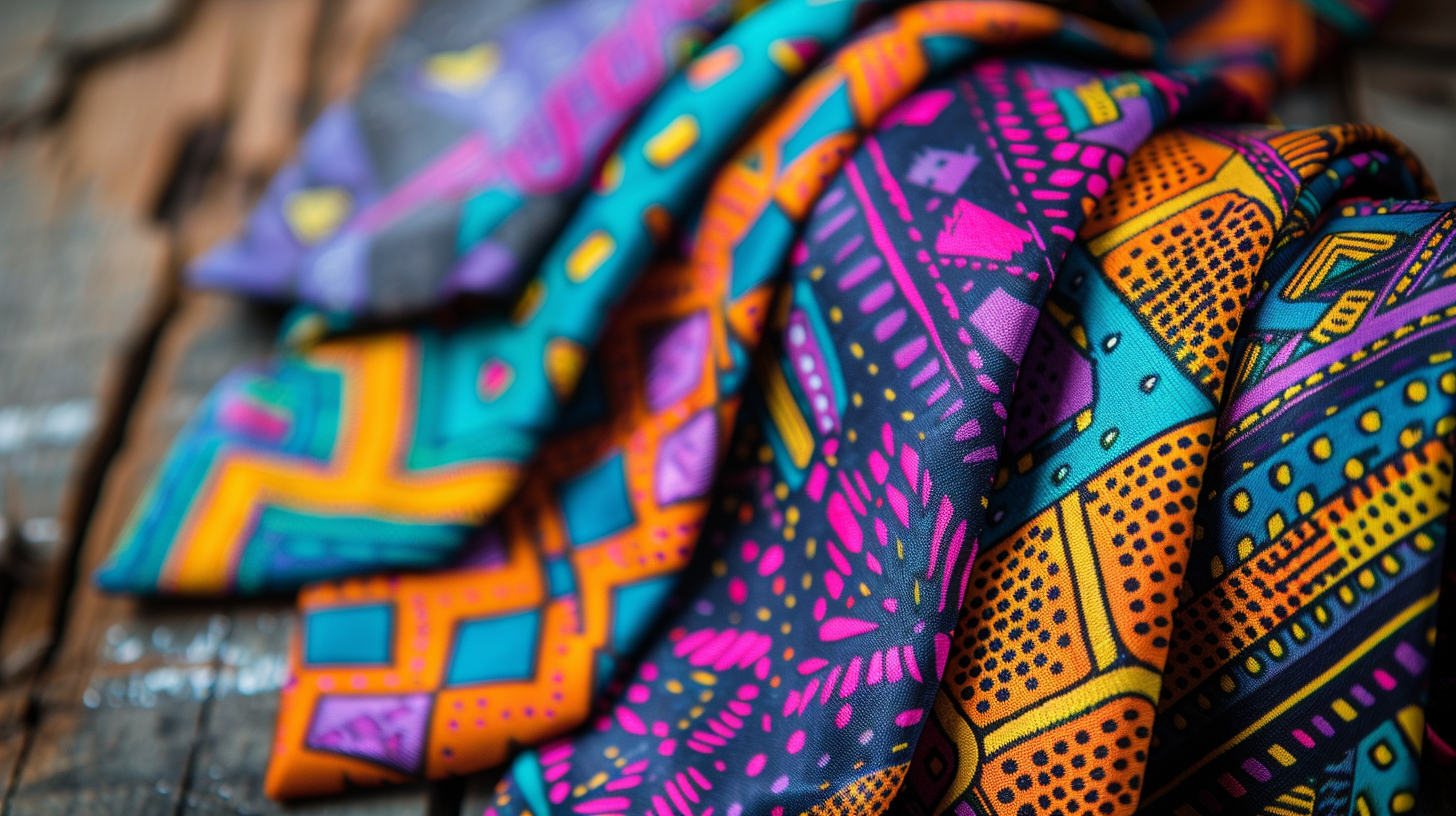Remember the bold, bright fashion of the 1980s? One of the most eye-catching trends was the necktie—skinny, wide, colorful, and full of personality.
Unlike any other decade, 80s neckties broke all the rules. From flashy patterns to unusual fabrics, these ties didn’t just complete outfits—they made statements.
Imagine adding that same retro edge to your look today—turning heads with a stylish, vibrant tie that speaks volumes without saying a word.
Dive into the fascinating history of neckties, discover what made 80s styles so iconic, and learn how you can bring this classic flair back into your wardrobe now.
What Is an 80s Necktie?
The 1980s brought many bold fashion trends, and neckties were no exception. Unlike the wide ties of the 70s or the classic wide ties of the 60s, 80s neckties came in a range of styles — from skinny ties to colorful bolo ties. These ties often featured bright colors, geometric patterns, and unique fabrics. Whether it was the slim, narrow tie popularized by rock stars or the chunky knit tie worn by fashion rebels, 80s neckties stood out and made a statement.
Types of 80s Neckties
The 80s experimented with necktie styles more than any previous decade. Here’s a quick look:
Skinny Ties
Very narrow ties, often about 1.5 to 2 inches wide. Popular in the early ’80s, they gave a sleek, modern look and were often worn with slim-cut suits or casual outfits.
Bolo Ties
A western-style tie featuring a cord fastened with a decorative clasp. They added a bold, casual flair and were sometimes seen as a quirky or retro accessory in the ’80s.
Bow Ties
Classic and formal, bow ties made a comeback in the ’80s with both traditional silk versions and more playful, colorful designs. They added a touch of elegance or fun depending on the style.
Knit Ties
Ties made from knitted fabric rather than silk or polyester. They had a textured, casual look and were often slimmer. Knit ties fit well with the ’80s trend toward more relaxed yet stylish office wear.
A Short History of Neckties
The necktie may seem like a small part of an outfit, but its story goes back hundreds of years. Over time, it has changed in shape, meaning, and style. Here’s a quick look at how it all began.
The Origins – 17th Century Croatia
The necktie’s earliest form appeared in the 1600s. Croatian soldiers wore clothes around their necks as part of their uniform. These “cravats” caught the eye of the French, who adopted the style. It soon became fashionable in Europe.
The Cravat Becomes Formal Wear
In the 18th and 19th centuries, men’s neckwear became more structured. Cravats were tied in many ways, often with lace or silk. They were worn by the upper class and were seen as a symbol of elegance and education.
The Modern Necktie Emerges – Early 1900s
The long, slim tie we know today began to take shape in the early 20th century. The tie became simpler and easier to wear, often with suits. The Windsor knot and other tie styles also became popular during this time.
Mid-Century Changes
In the 1950s and ’60s, tie widths and patterns shifted with fashion trends. Skinny ties appeared, followed by wide, bold versions in the ’70s. Each decade brought its own twist to the tie.
The Tie in Today’s World
Today, neckties are less common in everyday wear but still used in business, formal events, and fashion. People wear ties to express personality, professionalism, or tradition.
The Necktie: An Oddly Powerful, Yet Privileged Clothing Signifier
The necktie is just a strip of fabric. Yet somehow, it holds power. It signals professionalism, respectability, and even authority—but not for everyone, and not in every place.
A Symbol of Power
In many workplaces, a necktie means you’re part of the group. It suggests seriousness and competence. In courtrooms, boardrooms, and political settings, a man in a tie is often seen as more trustworthy or in control—even if nothing else sets him apart.
A Marker of Class
But the tie isn’t just about work. It can also show status. Expensive ties, designer brands, and custom knots are quiet ways to display wealth or taste. In that way, it becomes a privileged object—something tied to social standing, not just style.
Not Always for Everyone
For many, especially in less formal jobs or industries, a necktie feels unnecessary—or even out of place. It’s often linked to certain professions, people, or traditions that don’t reflect everyone’s reality.
Still Holding On
Though less common in daily life today, the necktie hasn’t disappeared. It’s still used to mark important moments: interviews, weddings, funerals. And for some, it’s a tool of self-expression—a bold color, a meaningful pattern, a quiet statement.
The Many Varied Meanings of Neckties
Neckties are more than just fashion. For centuries, they’ve been used to show identity, status, and style. A small piece of fabric can say a lot—without saying a word. Here’s what neckties often mean:
Professionalism
In offices and formal settings, a tie signals that you’re serious. It’s a way to show respect, discipline, and attention to detail. Wearing one often means, “I’m ready for business.”
Status and Wealth
A silk tie from a well-known brand can quietly show social standing. People notice quality, color, and how it’s worn. The right tie can reflect class and confidence.
Group Identity
Ties often mark membership. School ties, military ties, and club ties use colors and stripes to show belonging. They can represent tradition, pride, and unity.
Personal Expression
Some wear ties to stand out. Bold prints or unique knots can show personality. Even in formal settings, ties let people express creativity without breaking the rules.
Cultural and Political Messages
Colors and styles can carry meaning. A black tie for mourning. A rainbow tie for pride. A certain color to support a cause or make a statement. Sometimes a tie says more than just “style.”
Tradition and Ritual
At weddings, funerals, and graduations, a tie can show respect for the moment. It’s often part of family, cultural, or religious traditions passed down through generations.
How to Choose an 80s Tie
The 1980s were bold, loud, and full of personality—and so were the neckties. If you want to wear an 80s-style tie or build an 80s-inspired look, here’s what to look for:
Pick the Right Width
Ties in the 80s came in extremes—either skinny or wide.
- Skinny ties (about 1–2 inches) were popular in rock and punk circles.
- Wide ties (up to 4 inches) were common in business and fashion-forward looks.
👉 Choose the width based on your outfit. Skinny for edgy, wide for power style.
Go Bold With Patterns
The 80s loved eye-catching designs. Look for:
- Geometric shapes
- Abstract prints
- Color-blocked stripes
- Bright, clashing colors
Avoid subtle or muted designs if you want the true 80s feel.
Choose Strong Colors
Think neon, pastels, and contrast. Common 80s tie colors included:
- Electric blue
- Hot pink
- Deep purple
- Bright red
You can also find two-tone or patterned combinations that pop.
Try Unique Fabrics
Many 80s ties were made of:
- Silk (for shine and texture)
- Polyester (for that crisp, bold finish)
- Knit fabrics (especially for skinny ties)
👉 Knit ties gave a casual edge, while shiny silk ties leaned formal
What to Do with Old Neckties
Donate Them
If your old neckties are still in good condition, the simplest and most meaningful option is to donate them. Thrift stores, shelters, and nonprofit organizations that help people dress for job interviews will often accept ties. Even local schools or community theaters may use them for costumes. It’s a great way to give your old accessories a second life while helping someone else look their best.
Reuse Them as Accessories
You can repurpose neckties into stylish accessories with just a bit of creativity. Turn one into a pocket square, wrap one around your wrist as a unique bracelet or watch band, or use it as a headband. Ties also make great belts or bag handles, especially if you’re going for a more vintage or artistic look.
Make Home Decor
Old ties can bring a pop of color and texture to your home. With some basic sewing skills, you can create throw pillow covers, table runners, or even curtain tiebacks. Their long, narrow shape and often bold patterns make them great for adding visual interest to small items around the house.
Turn Them Into Crafts
If you’re into DIY projects, ties are full of potential. You can cut and stitch them into bookmarks, fabric keychains, or even holiday ornaments. Patchwork projects like quilts or tote bags are also a fun way to use up several ties at once while making something totally unique.
Wrapping Up
Neckties have evolved from simple symbols of tradition to bold fashion statements, especially in the 80s. Styles like the skinny tie, knit tie, and the unique 80s bolo tie each tell a story and add personality to any outfit. Knowing the history of neckties helps us see how this small accessory can hold so much meaning. With 80s styles making a comeback, now is a great time to bring some retro flair into your wardrobe and turn heads with a tie that stands out.














What do you think?
It is nice to know your opinion. Leave a comment.